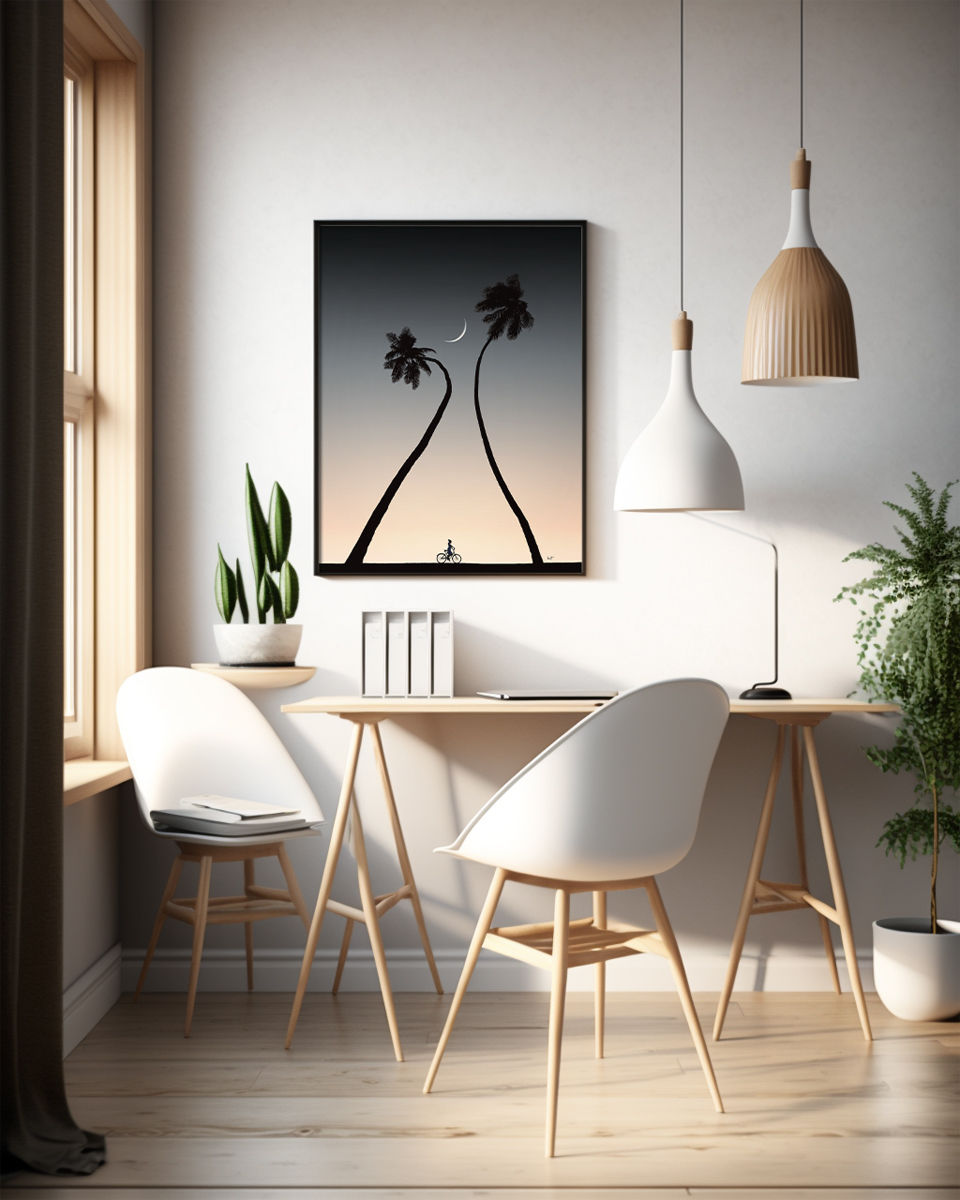AI Mockups for the online store?
- Kathrin Federer

- Apr 30, 2023
- 3 min read
Updated: Mar 3, 2024
Formerly Stock - today AI? The future of product presentation?
A mockup is a visual representation of a product or design in a realistic setting to convey to potential customers or viewers how it would look and function in a real-life situation.
In this day and age, it's more important than ever for me as an artist to present my artwork in an appealing way in online stores. An effective way to convince potential buyers is to use mockups that show the artwork in a realistic environment. In this blog post, I would like to share my personal use case where I may use Artificial Intelligence (AI) more often in the future to facilitate and speed up the mockup generation process.
Before AI: stock images or own photos
Until now, I've had to either take my own photos of rooms or use stock images to present my artwork in an appealing context. This process can be more time-consuming at times, as I want the space to fit my work and reinforce my vision. Adobe Stock offers a large number of high quality images here, even for free. Alternatively, there is also a versatile selection at Freepik or other stock platforms. For certain purposes I am also happy to license one for a fee.
With AI: prompt-controlled room generation
With AI technology, I simply enter a prompt containing the parameters for the room I want and get exactly what I want. The AI generates a room that meets my specifications and in which I can visualize my work.

Since the generated rooms are only used for my website, I don't need high-resolution images. As you know, the AI can't do that yet. So I can offer my potential buyers an appealing presentation of my artwork without having to spend a lot of time searching for the right stock images. That sounds good. But are we there yet?

My experience report: Midjourney vs. Adobe's Firefly
I tested room generation with AI on both Midjourney and Adobe. Surprisingly, the differences in the quality of the results were not as great as I expected. Since Adobe has a very good source of high-quality images in this area with Adobe Stock, I assumed that more could be expected here than with Midjourney.

CONCLUSION
In conclusion, my traditional workflow of licensing a stock image of a room and visualizing my artwork in it in Photoshop is still faster and better quality than generating a room tailored to my creation using AI and then completing it in Photoshop. However, a crucial aspect of this is also that I know exactly what I want the room to look like and where and how I need to look for it.
Dreams of the future: Complete mockup creation by AI
The future of AI-generated mockups could be even simpler and more intuitive. Imagine if you could simply hand the AI your artwork and instruct it exactly in which room and under what lighting conditions you would like to see your work. We're not quite there yet, but technology is evolving rapidly, and it's entirely conceivable that AI will develop such capabilities in the foreseeable future.
Critical Aspect
An important aspect to consider when using AI platforms is the rights you grant to the platform when uploading images. For example, as we know, Midjourney uses all the uploaded images for training its models. This is exactly what I, as an artist, want to avoid in order to protect my copyrights and control over my works.
More transparency with Adobe Firefly
Adobe's Firefly is much more transparent about how it uses data to train its AI models. New, promising features have already been announced. It remains to be seen what exciting possibilities Adobe Firefly will offer artists in the future, for example, to further optimize the process of mockup creation while ensuring the security and protection of their own works.
Have you tried AI-powered tools or do you prefer traditional methods? Let me know in the comments below which approaches you prefer and why.
Update December 2023
I recently tried out a new approach to creating mockups in Photoshop based on "Generative Fill" technology. To give you an idea of how this works, I've created a short video demonstrating the process. Watch the video to see the method in action.
While this approach is interesting and innovative, I have found that it takes several attempts to achieve a satisfactory result. I have high standards for the quality of my work, and so I find that I currently work even faster and with better results when I create the mockups manually. Nevertheless, it is definitely worth a try for someone who is not experienced in Photoshop.



